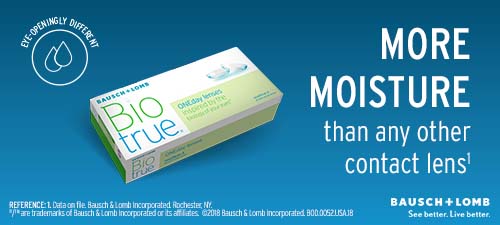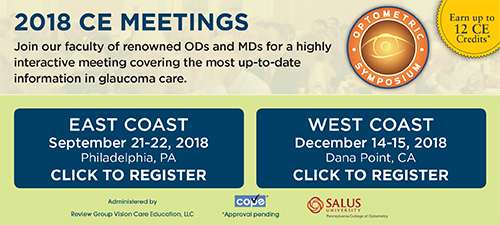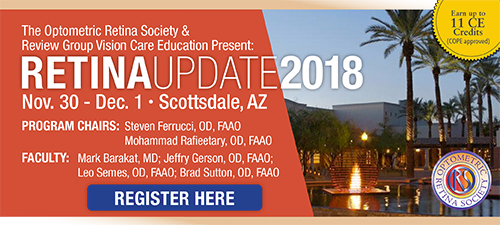
A
weekly e-journal by Art Epstein, OD, FAAO
Off the Cuff: BlephEx and Lid Disease
Beginning my sixth year of practice focused on dry eye and ocular surface disease, I have reached pinnacles of clinical success that I never considered possible. The overwhelming majority of my patients are doing well—often life-changingly “well,” while the number of patients I struggle with has become miniscule. In turn, my understanding of the disease state and functional ocular surface physiology has exploded. I find each day an adventure in learning. I first met Jim Rynerson several years ago. Passionate and visionary, Jim is a practicing ophthalmologist and the inventor of BlephEx. Along with my long-time mentor, Dr. Hank Perry, Jim has dramatically expanded our understanding of the role the lids play in ocular surface disease. The work of these two individuals is worth reading. BlephEx has been a game changer for me.
|
|||||
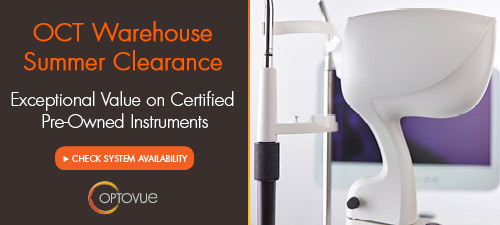 |
||
| Effect of Effort Level During Resistance Training on Intraocular Pressure | ||||
Researchers aimed to evaluate the influence of the level of effort during four basic resistance exercises leading to muscular failure on intraocular pressure (IOP) and ocular perfusion (OPP), as well as the role of exercise type and sex. Twenty-five young adults (12 women) performed 10 repetitions against their 10-RM (repetition maximum) load in squat, military press, biceps curl and calf raise exercises. IOP was measured before, during and after exercise, whereas OPP was indirectly assessed before and after each exercise. There was a progressive IOP rise during exercise, which was dependent on exercise type. The squat exercise induced higher IOP increments in comparison to the other exercises, and higher IOP values were found for the military press and biceps curl than for the calf raise exercise. OPP exhibited a statistically significant reduction when leading to muscular failure for the squat and military press exercises. No effect of sex was found for IOP and OPP. Researchers wrote that a single set of resistance training leading to muscular failure caused an instantaneous and progressive IOP rise in healthy young individuals. They added that the IOP rises depended on exercise type (squat > military press = biceps curl > calf raise), but not on participant´s sex. OPP diminished as a consequence of performing resistance training exercise, with statistically significance for squat and military press exercises. Researchers suggested that future studies should include glaucoma patients in order to corroborate the generalizability of the findings. |
||||
SOURCE: Vera J, Jiménez R, Redondo B, et al. Effect of the level of effort during resistance training on intraocular pressure. Eur J Sport Sci. 2018; Aug 7:1-8. [Epub ahead of print]. |
||||
|
|||
| Surgical Intervention in Inciting Eyes of Patients with Sympathetic Ophthalmia: a Case Series and Review of Literature | ||||
This retrospective study, of patients with sympathetic ophthalmia (SO) who underwent surgical procedures on the inciting eyes between January 2000 and December 2015, determined the effect on the SO eye. Outcome measures included flare up of inflammation in either eye and change in visual acuity in the inciting eye.
Four SO patients underwent surgeries in their inciting eyes after adequate control of inflammation. Surgical procedures included penetrating keratoplasty, glaucoma drainage device implantation, pars plana vitrectomy and silicon oil removal. Keratoplasty, glaucoma surgery and silicon oil removal were well-tolerated, with no flare up of disease. The patient who underwent pars plana vitrectomy, however, had a poor outcome. Surgical intervention in the inciting eyes of patients with SO, which were adequately treated with oral steroids and immunosuppression, was shown to be a viable option for improving anatomic and functional outcomes in these eyes. |
||||
SOURCE: Dogra M, Samanta R, Singh P, et al. Surgical intervention in inciting eyes of patients with sympathetic ophthalmia: a case series and review of literature. Ocul Immunol Inflamm. 2018; Aug 6:1-6. [Epub ahead of print]. |
||||
 |
||
| Racial Differences in the Effects of Hormone Therapy on Incident Open-angle Glaucoma in a Randomized Trial | ||||
Investigators conducted a secondary analysis of a randomized, placebo-controlled trial to test if hormone therapy (HT) altered the risk of open-angle glaucoma (OAG), and if the risk reduction varied by race. They linked Medicare claims data to 25,535 women in the Women's Health Initiative. Women without a uterus were randomized to receive either oral conjugated equine estrogens (CEE 0.625mg/day) or placebo, and women with a uterus received oral CEE and medroxyprogesterone acetate (CEE 0.625mg/day+MPA 2.5mg/day) or placebo. After excluding women with prevalent glaucoma or without claims for eye care provider visits, the final analysis included 8,102 women (mean age=68.5 years ± 4.8 years). The OAG incidence was 7.6% (mean follow-up=11.5 years ± 5.2 years; mean HT duration=4.4 years ± 2.3 years). Increased age and Afri can-American race were significant risk factors for incident OAG. Investigators found no overall benefit of HT in reducing incident OAG. However, race modified the relationship between CEE use and OAG risk (p=0.01), and risk was reduced in African-American women treated with CEE (HR=0.49, 95% CI, 0.27 to 0.88), compared with placebo. Race did not modify the relation between CEE + MPA use and OAG risk. The analysis suggested that HT containing estrogen, but not combining estrogen and progesterone, reduced the risk of incident OAG among African-American women. Investigators wrote that further investigation was needed to confirm the findings. |
||||
SOURCE: Vajaranant T, Ray R, Pasquale L, et al. Racial differences in the effects of hormone therapy on incident open-angle glaucoma in a randomized trial. Am J Ophthalmol. 2018; Aug 3. [Epub ahead of print]. |
||||
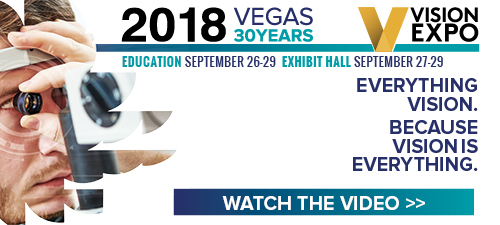 |
||
| News & Notes | |||||||||||||||
Essilor Launches New Wavefront Aberrometer, Mr. Blue Sun & Sport Edging System |
|||||||||||||||
Oyster Point Announces Positive Results from Phase II DED Treatment Trial |
|||||||||||||||
|
|||||||||||||||
|
Optometric Physician™ (OP) newsletter is owned and published by Dr. Arthur Epstein. It is distributed by the Review Group, a Division of Jobson Medical Information LLC (JMI), 11 Campus Boulevard, Newtown Square, PA 19073. HOW TO ADVERTISE |


